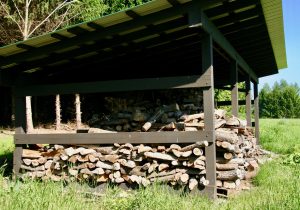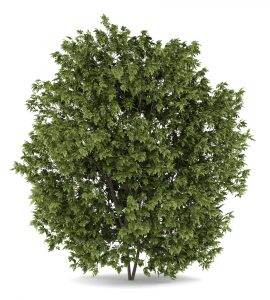 During the time, right before the heat of summer begins, your thoughts are probably on gardening and other outdoor projects. At our farm, we’re also thinking about firewood and planning to ensure we have enough for the upcoming winter season.
During the time, right before the heat of summer begins, your thoughts are probably on gardening and other outdoor projects. At our farm, we’re also thinking about firewood and planning to ensure we have enough for the upcoming winter season.
May and June are preferred times for splitting and stacking firewood that was felled (cut down) last year. You avoid the heat of summer and have fewer insects that bother you. Our preference is to split the majority with a 16 pound wedge maul. It’s great exercise and no mechanical parts will break down. We do have a 32 ton log splitter, which generally our neighbor uses for his splitting purposes. We’ll sneak it back to our place when we have large amounts or bigger logs to split.
We burn wood as a supplement to our heat source in the winter. In an extremely cold season, we can burn up to 6 cords of wood. A cord is 128 cubic feet. We have about three years of firewood available when our woodshed is completely filled. Our covered woodshed has three bays. Each bay is 10 to 12 feet and can store up to 20 cord of wood total at one time. A little planning and preparation allows us to take a break from wood splitting for a year or two if and when needed. It’s always beneficial to plan for potential breaks similar to the mindset of “saving for a rainy day”.
In our woodshed we put pallets down to keep air flow underneath the stacked wood. The sides on the shed are open, which also allows for airflow needed for drying purposes. Not allowing moisture to weather the wood, which reduces potential rot, keeps the energy available upon burning.
Winter is when we fell trees for next year’s firewood because the sap is in the root and not running through the tree. This timeframe allows the cut log to start drying faster. The dead trees and snags are left as found. They provide habitat areas for birds and mammal life. All good timber trees are also left alone, especially walnut, white oak, larger red oak, most hickories and sugar maple. As you can probably guess, sugar maples are for sap tapping. Making syrup is one of our favorite rituals in early march.
Within our home, we have two different sizes of fire boxes in our wood burning inserts. Therefore, we rough cut length at 16 inches for a portion of our wood and 24 inch lengths for the remainder.

Hackberry
We have a variety of trees that are readily available. This includes black locust, cherry of assorted types, red oak, white oak, occasionally hickories, hackberry, ironwood (hop hornbeam) and ash that have been damaged by the emerald ash borer. All of these wood species have good to excellent levels of BTU’s. British thermal units are an expression of measurement on the amount of energy or stored latent heat in the wood fiber. On our property we avoid using trees in the sycamore or elm families. They’re difficult to split and the BTU levels are lower than our other sources.
Occasionally, we cut and split some White or Norway spruce. They’re used only in our outdoor fire kettle. It starts quickly, burns hot and provides nice embers for nights in front of the fire.
With a little planning, we always have sufficient amount of wood for heating our home. We’ve talked about converting to a full outdoor wood burning heater and if we do, we’ll probably need a larger woodshed